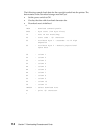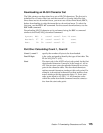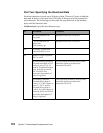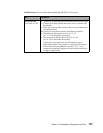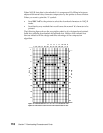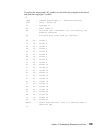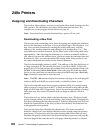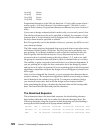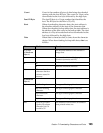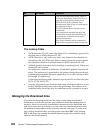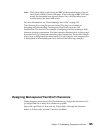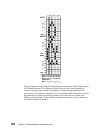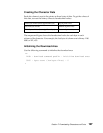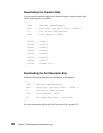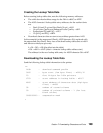Section 7: Downloading Characters and Fonts
122
10 cpi LQ 36 dots
12 cpi LQ 30 dots
10 cpi ELQ 36 dots
12 cpi ELQ 30 dots
Proportional characters in the 249x are based on a 7-unit width system where 1
unit is equal to 1/60 inch. Because 1 dot-column equals 1/360 inch, 1 unit is
equal to 6 dot-columns. Proportional character width may vary from 3 units to 7
units.
If you want to design a character that is n dots wide, you can only use n-1 dots.
The nth dot-column must always be specified as a blank. For example, a 10 cpi
character that is 36 dot-columns wide is designed with 35 dot-columns of data;
the last column must be specified as a blank.
Row 20 is generally used as the baseline. However, you may use all 24 rows for
your character design.
The 249x cannot print two horizontal dots next to each other except when using
an Enhanced Letter Quality (ELQ) font. The ELQ font can be printed by two-
pass printing. If you design a character with consecutive horizontal dots, the
first dot prints, and the second does not. Every alternate dot in the row of
consecutive dots is printed starting with dot positions 1, 3, 5, and so on, until
the group of consecutive dots ends (that is, there is a break in the row of dots).
The inability to print consecutive horizontal dots is not direction dependent. If
you are printing left to right, the first consecutive dot in the design is printed
and the dot to its right is not printed. If you are printing right to left, the internal
algorithms compensate and print the design as it would appear if printed from
left to right.
After you have designed the character, you can compress the character data to
conserve memory. The compression algorithm is based on not storing a column
that is identical to the column just to its left. To compress a character design,
you must add consecutive dots to fill the design and act as place holders.
After completing the design, calculate the character data and the lookup table
data. Then download the data and print the character.
The Download Sequence
This information shows the download sequence for downloading character
data, lookup table data, and, for an entire font, the font descriptor byte. The
following examples using the sequence include designing and downloading a
monospaced draft character and a proportional character.
Syntax: ESC = countlow counthigh id startlow starthigh data
Decimal: 27 61 countlow counthigh 35 startlow starthigh data
Hex: 1B 3D countlow counthigh 23 startlow starthigh data



